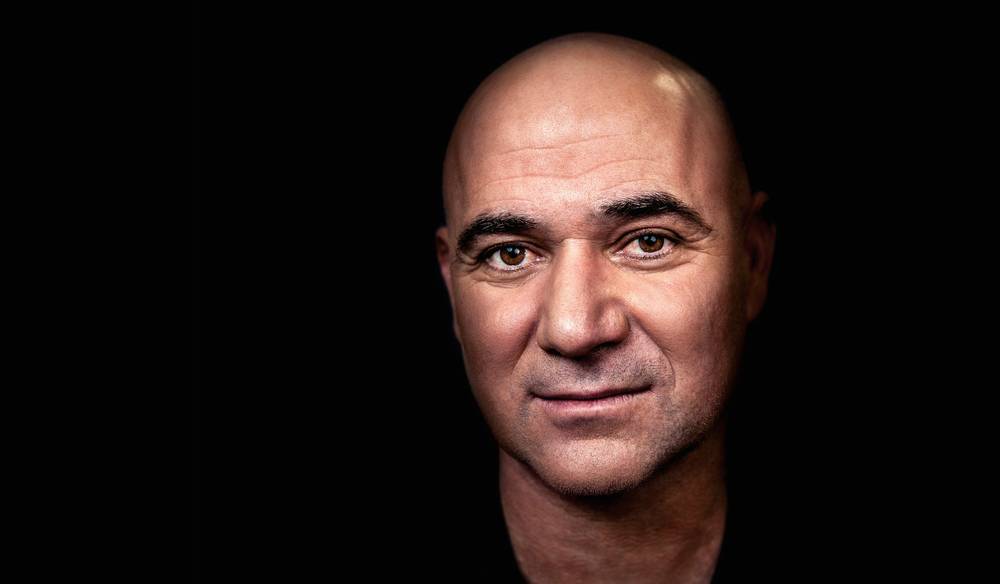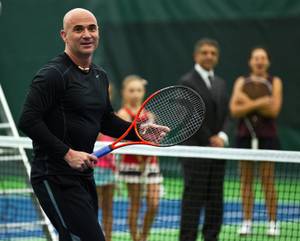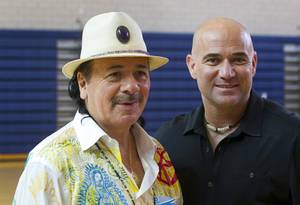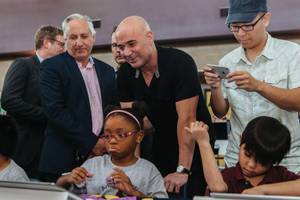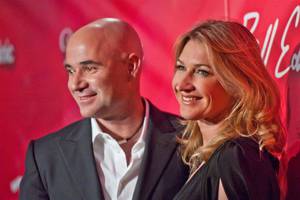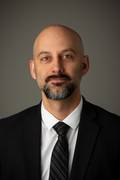If we’re lucky, there’s a moment in our lives—or even better, several moments—when the light shines, the path is revealed and we realize what it is we’re supposed to do. That’s if we’re lucky. Many us never discover what’s meant to be our life’s work.
It happened for Las Vegas native Andre Agassi at the age of 27, after he’d been a professional tennis player for 11 years. “I’d been No. 1 in the world, and I’d fallen all the way down to No. 140,” he says. “My coach locked me in the hotel room after a loss and said to me, ‘We’re either going to change everything or quit, but no more like this.’ So I sort of gave myself permission to quit, and then I rebelled against myself. I thought: What if I find myself for the first time, no longer playing for my dad, no longer playing for any economic reason?”
Agassi’s soul searching coincided with him catching a 60 Minutes segment about the Knowledge Is Power Program (KIPP), back then just developing into what it is today—a network of 200 nonprofit, college-preparatory charter schools. He saw the program’s founders changing children’s lives, and calls it “an epiphany. That was my moment of [realizing] that’s what I’ve got to do. Ultimately, it helped me get out of my own way on the tennis court. But that was the time that I set upon the task of building my own K-12 charter school.”
*****
Agassi retired from tennis at age 36 after the 2006 U.S. Open. He’d won 60 singles titles, eight majors and more than $31 million in prize money, plus far more in endorsements while becoming one of the most recognizable athletes in the world. He won five of those major tournaments between 1999 and 2003—after his epiphany—including the 1999 French Open, which put him in the elite class of players who have won all four majors. To this day, only eight men and 10 women have accomplished the feat.
But even before his late-career surge, Agassi had set his course. In 1994, he founded the Andre Agassi Charitable Foundation to improve the lives of children through education, recreation and social services. The following year saw him host the first Grand Slam for Children in Las Vegas, starring Elton John, Robin Williams and others, raising $1.8 million for the foundation. After Agassi shifted his focus to education in 2000, his Andre Agassi College Preparatory Academy opened its elementary school the next year on West Lake Mead Boulevard. It has remained at the center of his life ever since.
“I compare retiring as an athlete to death, and I don’t mean that dramatically,” Agassi says. “You can never quite prepare for what it’s going to be like when you’ve done something your whole life and spent a third of your life not preparing for two-thirds of your life.”
He says he was different from most pro athletes in that he didn’t have a healthy relationship with the game that gave him fame and fortune—a relationship well documented in 2009 autobiography Open—so he embraced retirement, even if he was unsure. “The one thing I did enjoy about tennis was the ability to impact somebody for a few hours, and retirement was a canvas to impact people on a greater scale.”
*****
If Open was the perfect title for Agassi’s memoir, Scale might fit his second life. The more the 46-year-old tennis legend has worked to build and improve his Las Vegas charter school—which enrolls 1,200 students in grades K-12—the more he has learned about the shortcomings of the system. The biggest problem he sees is the scale.
“My greatest frustration throughout the process with my school was that there are always more kids on the waiting list than in the school,” he says. “I’ve tried to figure out ways to scale what I was doing, through legislation, which isn’t very efficient at times, and I’ve had people who wanted me to build schools in their neck of the woods. But I’m not an operator.
“So I realized, I’m not an educator, I’m not an operator, what am I? I’m a facilitator. And doing this for 15 years, seeing it outside the box, has shown me the greatest impediment to the growth of great school operators is not the software. It’s the hardware—the facility itself.”
Over the course of 15 years, Agassi’s foundation raised $185 million for one school with 1,200 kids. In the past three years, the Turner-Agassi Charter School Facilities Fund has built some 70 schools across the country—including several in Nevada—that serve more than 30,000 kids.
The fund launched in 2011, the same year Agassi got inducted into the International Tennis Hall of Fame. “It came out of realizing philanthropy is not the answer all the time,” says Francisco Aguilar, general counsel for Agassi’s foundation and management company. “The question was, how do you merge private capital with a social issue?”
Turner-Agassi, created with K. Robert Turner, former CEO for multibillion-dollar commercial real estate firm Canyon Capital, is the answer. The fund’s partners created a for-profit model that gets money from the private sector to build charter schools for established, high-quality operators. Those operators get to scale rent payments as they ramp up enrollment, allowing for faster growth. Once schools have stabilized—usually around the third year, Agassi says—the fund redirects rent payments through tax and bond markets to give operators purchasing power to buy back their facilities.
It’s a sped-up version of charter schools’ traditional development model, which often finds them incubating at churches or Boys & Girls Clubs until they grow and generate enough revenue to find permanent homes. Agassi describes the infrastructure fund as a “benevolent owner” instead of a typical landlord-tenant arrangement, guiding experienced investors interested in social change to connect with new, paid-for facilities operated by accomplished educators.
“I don’t think anyone thinks about education and serving the community as uniquely and broadly as Andre,” Aguilar says. “I think it comes from being an athlete in a sport that requires a lot of thought and preparation.”
*****
All the thought and preparation that have gone into Agassi’s efforts to scale up charter-school development across the country have changed the way he thinks about his own school in Las Vegas, and the press conference he’ll hold with Nevada Governor Brian Sandoval on February 17 will officially put those changes into action. Democracy Prep, based in New York City and considered one of the top charter operators in the country, will expand to the West Coast for the first time when it takes control of Agassi Prep next year.
“My hope is that by coming out to the west side of the country, we are planting the flag and making sure more operators like us see this as a proof point that it can work for them,” Democracy Prep CEO Katie Duffy says. “Then more kids would have access to high-quality education in Las Vegas, even if it’s not Democracy Prep.”
Agassi says his school has always been about stealing the best practices from operators like Democracy Prep, and that he’ll be more effective for the community by attracting such an operator to Southern Nevada and directing his foundation’s resources in a more strategic way. “I think it’s a win across the board,” he says.
Of working with Agassi, Duffy says she was “shocked at how knowledgeable and deeply passionate about education reform across the country he is, My commitment now is to give him the best school in the country as fast as I can.”
Agassi still sees his school like it’s one of his children. “I love the years I’ve spent and will continue to do that. ... I’ll never not spend time and energy and money on the school,” he says. “It is like a child. It’s born, it grows up, it goes to college. The needs and responsibilities change, and sometimes you do less, but what you do becomes more important. The stakes get higher. I will always love and care for it.”
Will his morphing duties give him more time to do new things? “I don’t know. The balance of life is important. The choreography of it is crucial. I don’t compromise the family time—I really do get to see and be a part of mostly everything.”
Agassi and his equally legendary wife Stefanie Graf (known as Steffi during her tennis-playing days) have two children, Jaden, 15, and Jaz, 13. The couple intentionally steered their kids away from tennis “very subtly” by getting them involved in other things very early on. Jaden, a talented pitcher, is being looked at by college baseball programs.
Agassi stays involved in tennis, though, forever appreciating the platform the game provided him. Maybe it’s easier to love tennis more now that he has found his true calling. And maybe he can give tennis some credit for helping him find it.
“I didn’t have a choice in my life with what I did, the way I was raised, and that led to a disconnect,” he says. “Even though I was the best in the world at something, that disconnect was a function of that lack of choice.
“The idea that children don’t have choice in their lives because of circumstances, and they don’t have the luxury of falling back on something—that can end up in places that are not good, and they don’t get a chance to break that cycle.”
